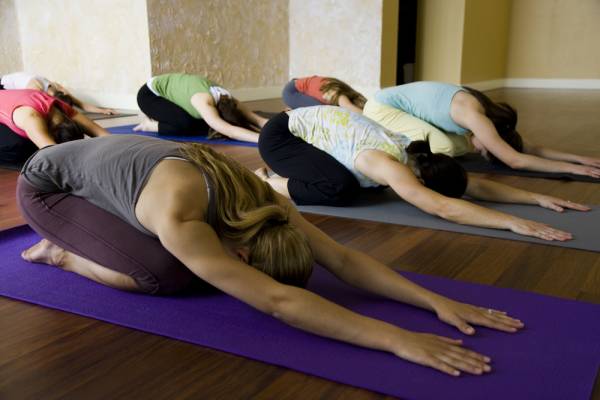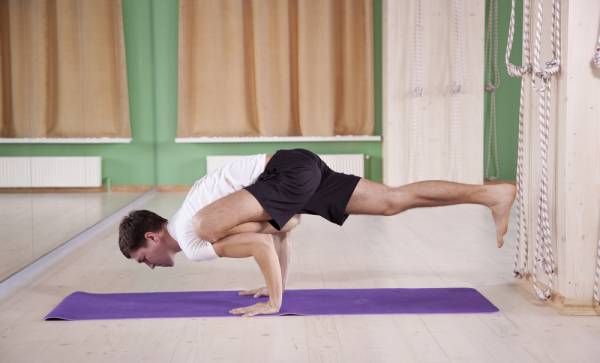Sometimes people in yoga refer to the practice of asana as “prayer in motion.” I recently discovered something that takes this idea to a new level – an ancient concept known as kriyavati. It has to do with the way an awakening of kundalini energy affects the hatha yoga practitioner.
If you’re like me, the word kundalini might conjure up all kinds of images – a girl in a flowing dress with flowers in her hair who’s changed her name to Shanti or perhaps a bearded man in a white turban chanting, “Wahe guru.”
I hope what you learn here will inspire you to go beyond some of these preconceptions to discover how kundalini can be a fundamental part of your asana practice and vice versa.
The Inner Workings of Yoga
You may know of kundalini as a branch of yoga founded by Yogi Bhajan. But kundalini is more than that. Kundalini represents a latent spiritual power that resides in each one of us. It can’t be measured by traditional scientific methods, but its effects can be seen on the body and mind. One way awakened kundalini energy can manifest is in the form of spontaneous asana, and this is kriyavati.
I first learned of kriyavati in a commentary on the Hatha Yoga Pradipika, which described asanas as “more than consciously created gymnastic exercises.” It went on to explain that during a kriyavati state:
An inner mechanism seems to be at work. Slowly, steadily, with unencumbered ease his [the yogi’s] arms intertwine, the legs go into contortions, the spinal column twists: asanas perfected to the utmost. He includes asanas no textbook has ever described…They are asanas that can be performed only by the yogi who has learned to govern his body completely with his higher consciousness.
These ideas intrigued me. Shortly after reading this, the same day in fact, I felt the practical effects when I found myself kicking up into a handstand leading with my left leg. I know it sounds like nothing, but this had eluded me for years.

“Through these practices I gained inner strength and confidence in my connection to something much greater than I’d known myself to be. My health steadily improved.”
Later that day, in a yoga class, another transition that had been beyond my grasp, happened spontaneously – reverse downward facing dog (camatkarasana) to upward facing bow pose (urdhva dhanurasana). It’s as if by entertaining the possibility of such a state, mental blocks manifesting in my body gave way to greater freedom.
RELATED: The Psychology of Asana 101
Cultivating Awareness
As the days passed, I continued to contemplate this new awareness and integrate it into my teaching and personal practice. I stumbled upon an Indian saint – a woman named Sri Ananadamayi Ma who lived from 1896 to 1982.
The most well-known yogi to write about her was Paramahansa Yogananda, who referred to her as the “Joy-Permeated Mother,” in his book Autobiography of a Yogi. Sri Ma, as she was called, experienced states of kriyavati witnessed by her husband and others. During times of meditation, she assumed yogic postures, though she had no previous knowledge of them. As her husband described it:
[H]er entire body moved rhythmically as if in vibrant dance-forms of an extra-ordinary choreography directed by an inner power. Sometimes she lay for many hours absolutely still and totally absorbed in an inner bliss. At such times her body emanated a radience which was visible to onlookers.
As my understanding of kriyavati grows, I think it could be likened to ecstatic dance or the practice of speaking in tongues in the Pentecostal movement, maybe even the miraculous instances where someone lifts up an automobile to save another person.
“Those deep impressions of strength emanating from the inside come to my rescue when I revert back to relying on the merely physical aspects of my being.”
An often-quoted statement by modern dance legend Martha Graham also comes to mind:
There is a vitality, a life force, an energy, a quickening that is translated through you into action, and because there is only one of you in all time, this expression is unique. And if you block it, it will never exist through any other medium and will be lost.
Maybe kriyavati is one way we experience this vitality of which she speaks.
A Turning Point in My Own Training
Looking back, I can see I experienced the phenomenon in a small degree when I returned to my practice of asana after an extended period of illness. I hadn’t done any kind of physical exercise for over four months. Instead, I was practicing jnana (pronounced yah’-nuh) yoga – the yoga of wisdom or true knowledge.

Being in a weakened physical state compelled me to seek meaning and a sense of myself beyond my body. I spent hours every day studying scripture, meditating, and praying. Through these practices I gained inner strength and confidence in my connection to something much greater than I’d known myself to be. My health steadily improved.
RELATED: How to Maintain Yoga’s Lineage in Modern Times
The day I journeyed back to my mat, I thought I would probably end up in child’s pose for most of the class – but instead I felt stronger and more grounded than I ever had before. It was as if I stood outside my body watching in awe.
“All of yoga becomes accessible through the practice of asana if the student is open to it.”
That was a turning point for me. Since then, my asana practice has become an inside-out experience that continues to expand. Those deep impressions of strength emanating from the inside come to my rescue when I revert back to relying on the merely physical aspects of my being.
Viewed through the lens of kriyavati, what happened for me was a kind of spiritual awakening, a reliance on power beyond the physical. It’s a small depiction of the body being governed by higher consciousness, as mentioned in the Pradipika commentary.
RELATED: Fighting the “Mehs” – When Taking Some Time Off Is Good
Applications to Your Yoga Practice
In a culture fixated on asana, I often find myself advocating for the other seven limbs of yoga. It is true that current perceptions have to a large degree made asana about physicality, but I’m learning it’s much more than that.

All of yoga becomes accessible through the practice of asana if the student is open to it. And as the yoga sutras describe in three simple verses steadiness and ease in a yoga pose become the portal to transcending duality and merging with infinity:
is a steady
and comfortable position.
Yoga pose is mastered
by relaxation of effort,
lessening the tendency
for restless breathing,
and promoting an identification
of oneself as living
within
the infinite breath of life.
From that
perfection of yoga posture,
duality,
such as reacting to praise and criticism,
ceases
to be a disturbance.
(verses 2.46-48)
Isn’t it encouraging to think that by degrees our asana practice can actually become Infinity embodied?
References:
1. Patanjali, Yoga Sutras of Patanjali. Translated by Mukunda Stiles. Boston: Weiser, 2002
2. BKS Iyengar, Light on the Yoga Sutras of Patanjali. Glasgow: Omnia Books, 1993.
3. Hans Ulrich Rieker, Commentary on Hatha Yoga Pradipika by Swami Svatmarama. Translated by Elsy Becherer. Accessed December 15, 2014.
4. Ericc Schiffmann, “Moving Into Stillness,” accessed December 15, 2014.
5. “Introduction to Sri Ma’s Life,” last modified 2007.
All photos courtesy of Shutterstock.






